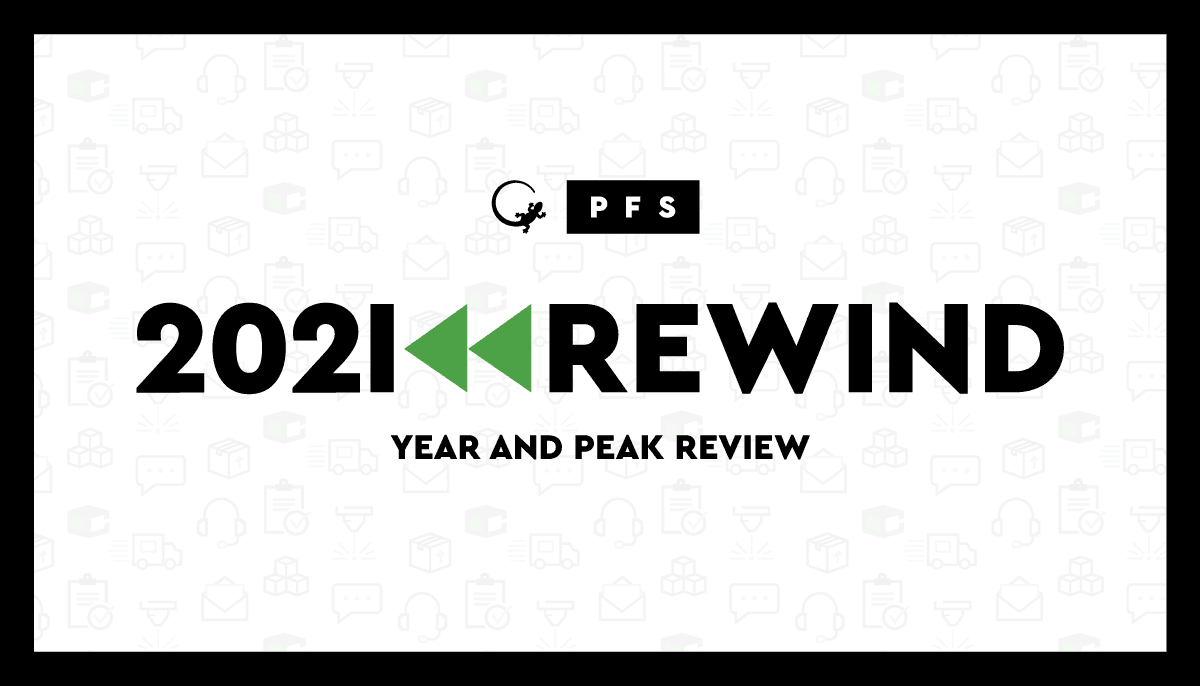
Preparing for Retail Demands When Forecasting is Impossible
The only certainty in retail over the last few years has been uncertainty. Whether it’s the associated effects of Brexit or the pandemic, retail has been hit hard. Brands are now facing a range of supply chain disruptions and shortages with no end in sight. Looking beyond the 2021 peak shopping season, 2022 holds even more unknowns, making forecasting just as challenging.
So, how can brands prepare for the year ahead – if accurate forecasting isn’t an option?
Being agile in a turbulent climate
Agility has proved to be the key to survival for retailers when faced with adversity or the unknown over the last 18 months. This will continue to be the case in 2022 as the dust hopefully begins to settle on the effects of the pandemic.
As we learn to live with COVID-19, the way we shop will continue to evolve. Adding to the headache for retailers, and making forecasting even more difficult to predict, are the spending habits of consumers. In January 2021, consumer spending fell sharply amid tightening lockdown restrictions and a fall in consumer confidence.
And we’re set for further economic turbulence, with the UK facing a potential two-year squeeze as inflation is expected to peak at 5% in early 2022. With inflation soaring at the fastest rate in 10 years, energy bills continuing to rise, and an increase in National Insurance from April 2022, many households up and down the country will be feeling the squeeze on their disposable income.
Building the right infrastructure
There’s no crystal ball when it comes to pre-empting the outcome of this economic disturbance. Instead, online retailers and brands must prepare to ride out the wave and equip themselves with the agility and flexibility to respond accordingly.
This begins with the right infrastructure. For many retailers and brands, a lack of clarity around being able to forecast demand in 2022 is making the decision to invest in warehouse space, and additional employees, a difficult one – especially as many retailers have faced their own financial difficulties this year. There’s also a chronic shortage of warehouse space in the UK currently.
Luckily, there are several alternative fulfilment solutions available to brands that can ease the level of investment required:
- Pop-up distribution centers, for example, can act as temporary warehouses to accommodate sudden spikes in demand. These can be quickly set up within a brand’s existing estate or in smaller venues such as empty shopping units. With the right order picking technology, brands can leverage existing store space and transform it into a hybrid facility, armed and ready to fulfill online orders. A solution first used by brands trialing new markets and supporting seasonal promotions, these temporary infrastructures can be rapidly implemented as and when needed.
- Property company British Land also recently unveiled plans to buy and convert car parks and empty retail centers into urban distribution hubs for online shopping and same-day grocery shopping. But such is the technology now, that brands can do this themselves quickly for a reasonably small investment. If underpinned with an effective Distributed Order Management (DOM) system, brands can scale effectively whilst also removing the need for the significant investments associated with leasing a warehouse facility.
- Brands should also consider a multi-node fulfillment strategy, which decentralizes the fulfillment process by taking advantage of a number of micro-distribution centers strategically placed close to customers, rather than operating from a single warehouse site. By considering such an approach, and teaming it with a DOM system, brands can easily locate and route stock to fulfill orders quickly.
Learnings from peak 2020
Whilst the future is uncertain, there are certainly learnings that can be taken from last year’s preparations – which were arguable equally as unpredictable. In the early months of 2021, a worryingly high number (50%) of retail businesses agreed that they had failed to adequately prepare for peak 2020.
However, those who had geared up their operations in preparation said they were rewarded with increased sales volume. This resulted in a quick and significant return on investment. Of those who saw an increase in sales last peak, 67% had invested in BOPIS capabilities to strengthen their omnichannel proposition to their customers. In addition, over half (55%) of those who invested in curbside pick-up and the same amount who invested in extra fulfillment capacity (55%) also benefitted from increased sales.
As a result, 52% stated they would be likely to begin outsourcing or change BPO providers for all or portions of their eCommerce operations in 2021 to meet changing consumer demand. Third-party logistics (3PL) or BPO acquisition, therefore, is a possible trend to watch for as retailers aim to have more control over their eCommerce fulfillment destiny.
Retail resilience amongst uncertainty
Retail is now a ‘digital-first’ entity, and for brick-and-mortar retailers, omnichannel capabilities are critical. Last year’s peak season taught us that the supply chain must support multiple delivery options, with customers being allowed to drive those options. To support this, technology and operations must be aligned. Last year also highlighted the detrimental effect that not being aligned can have, with only 52% of retailers feeling that their technology stack was prepared for peak season volume.
Preparing for another turbulent year of retail will by no means be easy, but retail has proven itself to be resilient over the last two years. With peak ramping up for 2021, now is the time to look ahead and build a strategy based on agility, flexibility, and scalability. A strategy that can be attained with the help of a qualified BPO partner to help steer it to success.
So, are you ready?


